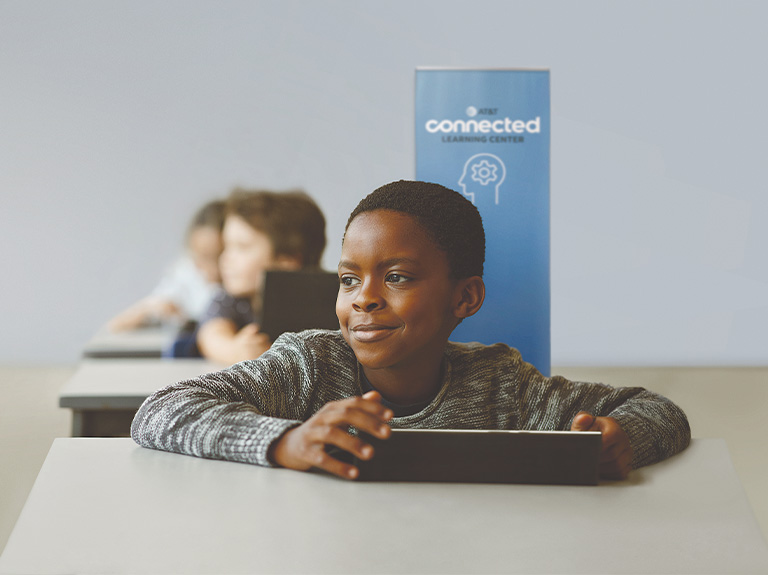Is Your Family ScreenReady? A Parent’s Experience

Johanna has been living in New York City with her daughter for 14 years. As a single mom, Johanna says her sixth-grader, who currently attends the New York Ballet on a scholarship, is the light of her life.
Last year, Johanna went into a New York City AT&T retail store to get her own phone upgraded. It was then she began weighing the pros and cons of getting her daughter a phone of her own.
“I chaperoned one of her school trips, and she was the only person who didn’t have a phone,” Johanna said. “There are so many things these kids are involved in these days – she goes to a sleepover, she goes to school, she goes on a trip. As a parent, you worry!
“The main thing you want to do is protect your child and know they’re okay – and being able to contact them is so important. But the risks that come with kids being on their phones can be very real.”
While inside the store, four-year AT&T Retail Sales Consultant Josephine Perez walked Johanna through the company’s new ScreenReady program. She offered her personalized tips to help ensure her daughter was using the phone safely and how to manage her daughter’s screen time.
“ScreenReady helps parents get answers to questions they didn’t even think of asking,” Perez said. “I think this program is really taking AT&T’s customer service to the next level because it’s adding another angle to how we can help serve our customers.”
Johanna agrees with that. She says she was relieved to find all the information she’d been looking for in one place. She no longer had to wander unguided through the internet’s maze of parenting advice.
What is AT&T ScreenReady?
In 2018, AT&T surveyed New York City teens, parents of teens and millennial parents of younger children. The survey gauged how children are consuming media on mobile devices and what their parents understand about their behaviors.
Findings indicated significant differences between what parents think their kids are doing online – be it on their phones, tablets, computers, or gaming platforms – and reality.
In response, AT&T in November launched ScreenReadySM to greater New York City. The goal is to empower parents to understand their children’s devices and what they do with them when they’re online.
ScreenReady provides consumers with two online safety services at no charge:
- First, AT&T’s retail-based device experts provide hands-on guidance within the parental controls and content filter settings on the consumer’s phone and tablet. These settings, which are built into the operating systems of many devices already, can be hard to understand and navigate.
- Second, parents and caregivers have access to customized tips, created in collaboration with Common Sense Media, to fit their family’s online safety needs, accessible in stores on free-to-use display tablets.
This program is the first of its kind offered to parents in a retail environment. It also is an extension of AT&T BelievesSM, a larger company-wide initiative aimed at creating positive change in local communities. In parallel with this effort, AT&T’s Later Haters program aims to promote positive dialogue in social media, while AT&T’s Great Game campaign promotes kindness and good sportsmanship within the online gaming world.
Putting Up Guardrails
With the help of ScreenReady, Johanna talked with her daughter about protecting herself from strangers online, and established ground rules and expectations of when and where to use her smartphone. She also discussed with her daughter how to respond if she suffers, or witnesses, online bullying. The process also helped Johanna better understand the many social media apps her daughter’s friends like to use.
Johanna says ScreenReady has given her peace of mind.
“(My daughter) and I have a good bond and I trust her, but I now know how to protect her,” said Johanna. “Even if I can’t monitor everything she’s doing online.
“I feel comfortable now, thanks to ScreenReady,” she said. “AT&T did the leg work for me, and I’m certainly not going to be the only parent happy about that.”
Today, Johanna’s daughter uses her new smartphone to finish her homework, watch DIY and slime videos, and researches new stretches for dance class.
And, of course, to text her friends as much as she can. She is in middle school, after all.


